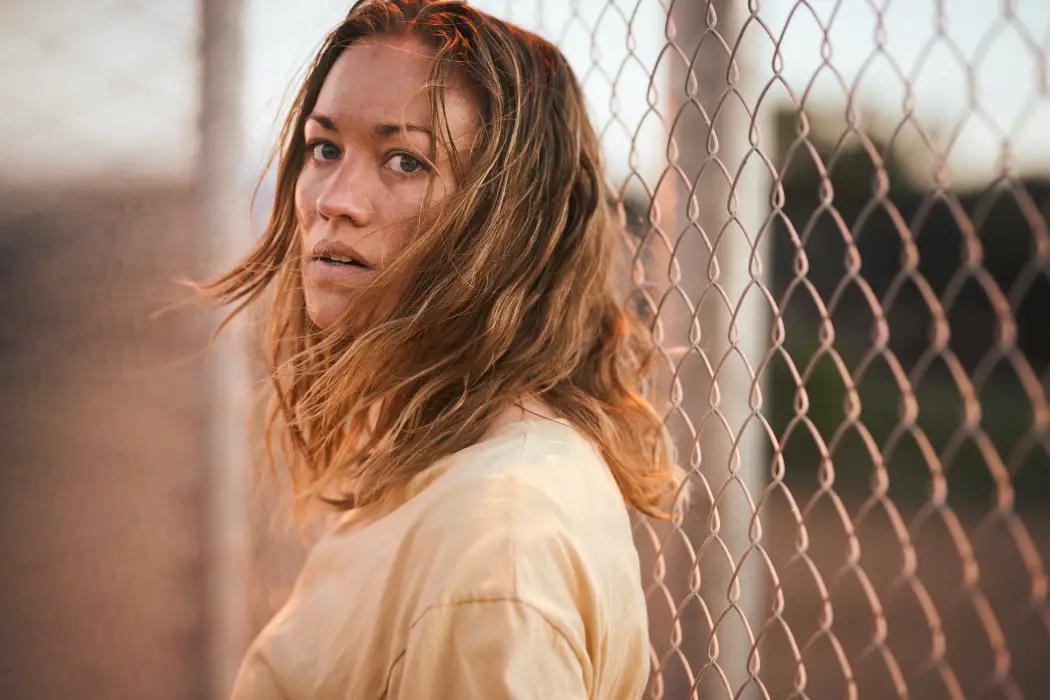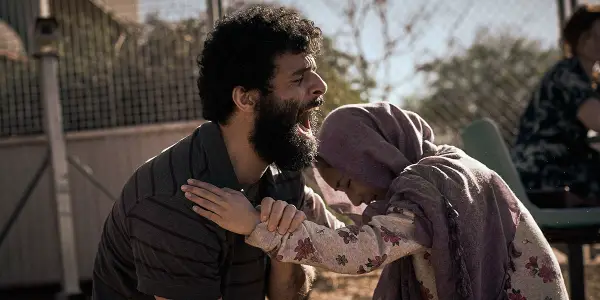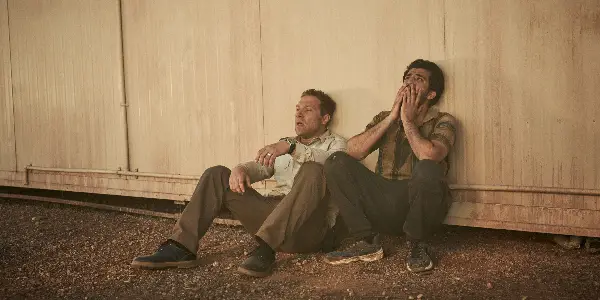STATELESS Miniseries: A Stirring But Overwhelmingly White Refugee Drama

Reyzando Nawara is a passionate film and TV enthusiast from…
There’s something that doesn’t feel right about Stateless. Not because it’s horribly made, or because the cast is bad. The problem rests on the overwhelmingly white perspective that the show is using to tell the story that’s supposed to put people of color at the front seat. Yes, Stateless, an Australian miniseries co-created by Cate Blanchett, Tony Ayres, and Elisa McCredie, is meant to explore the broken system of an Australian detention center, highlighting the struggle that asylum seekers have to deal with while they’re trying to have a better life in Australia. But while the intention is admirable, the show is sadly anything but, as it’s too busy focusing on the interior lives of its white characters instead of the right people it wants to highlight in the first place.
Broken System
Among one of those white characters is Sofie Werner (the Emmy-nominated Yvonne Strahovski), a flight attendant who, due to several unfortunate events, ends up unlawfully detained at the fictional Barton detention center. When we first meet her, she is running away from something in the middle of the Australian outback, looking exhausted and directionless as if she’s looking for something so far away. This harrowing picture then becomes a perfect metaphor for the real struggle that Australian asylum seekers are facing nearly every day inside the detention center: the yearning for a little bit of freedom in a land that promises them everything but ends up giving them nothing.

Sofie played phenomenally by Strahovski, is based on a real person named Cornelia Rau, a mentally ill German citizen and a permanent Australian resident who in the early nineties was “imprisoned” for ten months in Baxter detention center after escaping a cult (in the series, the cult is led by Blanchett‘s Pat and Dominic West‘s Gordon Masters). And it’s through her journey of trying to get deported back to Germany and fleeing the cult and her family, where the show gets to introduce the other three main characters and the issue of dehumanization inside the immigration center that it wants to tackle.
First, there’s Ameer (Fayssal Bazzi), who’s trying to escape from Afghanistan to Australia with his wife, Najeeba (Saajeda Samaa), and two daughters, Mina (Soraya Heidari) and Sadiqa (Ilaha Rahemi). His story of getting separated from his family, then ending up at Barton is where the show gets most of its devastating moments. And Bazzi really captures the emotional impulse of the show with his remarkable performance. But it’s when he’s navigating the cruelty inside the detention center, where Stateless really hammers home the horrible treatment that these asylum seekers receive from the people working inside the system.

On the other side of the fence, there is Cam Sandford (Jai Courtney), a father who’s lured to taking a job as the guard inside Barton detention center, and also Clare (Asher Keddie), a no non-sense bureaucrat appointed to fix the bad press that’s been surrounding the detention center for quite a while. Throughout all six episodes, the show follows Cam and Clare as they’re slowly eroded by the broken system; as they’re forced to lose their humanity and empathy toward the asylum seekers for the sake of keeping their job. It’s harrowing to see the incremental yet potent devolution that both of these characters are experiencing, and it’s made even stronger with Courtney and Keddie‘s astonishing performances. The former, in particular, is a standout. He’s able to show the emotional and moral dilemma that Cam is dealing with in a really believable way.
Through Cam and Clare, it’s clear that Stateless wants to show us that the broken system of the Australian immigration program is not just harming the refugee, but also the people who dedicate their lives to it. And when Stateless is able to display these layers of complicity created by no one but the system itself, without reducing Ameer’s story, the show is at its most stirring. But more often than not, Stateless struggles to find the perfect balance between all of the main characters, and as a result, it becomes very misguided as it keeps sidelining Ameer in favor of more emphasis on Cam, Clare, and Sofie.
Too Much Whiteness
Of course, it’s understandable if Stateless wants to use Sofie, or to an extent Clare and Cam, as the trojan horse that opens a much larger discussion about the dynamic inside the detention center itself — after all, Orange is the New Black has previously proven that it’s an effective method when it’s done right. But the problem here is, it seems that Stateless is completely unaware that when it comes to telling a story of how broken the Australian immigration program is, the people who are supposed to be the highlight have to be the immigrants themselves, not the white characters surrounding them.

Ameer’s presence in the story ultimately feels like just a token of all the other POC characters, but never really given the opportunity to be as complex as his white counterparts. Yes, we know that he’s from Afghanistan and that he’s separated from his family on his way to Australia. But other than that, the show never really lets Ameer’s interior lives to standout in the way that Sofie does. And to make things even worse, all the things that Ameer is subjected to throughout all six episodes feel only like a material to show how miserable it is to live inside the detention center, not to make his character or the story more compelling.
If what Stateless wants to achieve in the first place is to open our eyes and spark a discussion regarding all these immigration issues, then the show should’ve fleshed out Ameer’s story a little more, and even included all the other POC characters, who mostly end up in the background, into the bigger part of the story. There are literally so many angles from the other asylum seeker characters that the show could’ve brought to light. The struggles that Ameer is facing, and the reason why he flees his homeland won’t be the same as the one that, say, Javad (Phoenix Raei) or Rosna (Helana Sawires), two other POC characters in the show, are having. And to make Ameer’s story the only representation for all of the asylum seekers involved in the story feels reductive at best and problematic at worst.
Final Thought
Stateless, of course, has its heart in the right place. After all, the show wants us to engage in a difficult conversation about the issues with detention centers that have been happening not just in Australia, but also in other countries too, for a very long time. But by diminishing the POC characters it’s supposed to focus on, Stateless sadly ends up robbing itself of an opportunity to be a show that is truly remarkable and also important. What a bummer.
Have you seen Stateless? What do you think of it? Let us know your opinion in the comments!
All six episodes of Stateless are available to stream on Netflix.
Watch Stateless
Does content like this matter to you?
Become a Member and support film journalism. Unlock access to all of Film Inquiry`s great articles. Join a community of like-minded readers who are passionate about cinema - get access to our private members Network, give back to independent filmmakers, and more.
Reyzando Nawara is a passionate film and TV enthusiast from Indonesia. When he's not watching TV and movies, he likes to cook and make sorbet.













